Culture
Elegance of Kashmiri handicrafts: Unique in its versatile designs
Published
5 years agoon
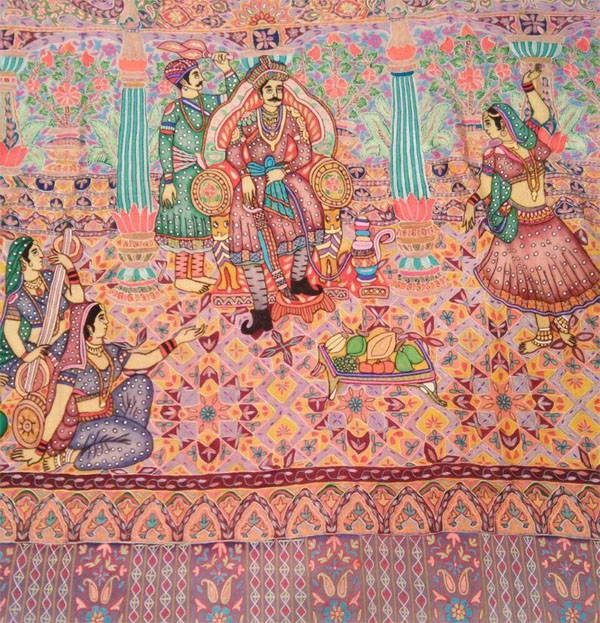
MUZAFFARABAD, Oct 25 (APP):The state of Jammu and Kashmir with enchanting landscape is not only famous for its natural beauty, tradition and culture and known as the paradise on the earth but also enriched with its handicrafts depicting its rich culture and civilization which is spread over centuries.
The kaleidoscope of Kashmiri handicrafts is unique in its versatile designs, eye soothing and eye catching beauty. Despite the increasing influence of innovation and automation, the artistry and skill of hand-made artifacts of Jammu and Kashmir (J&K) continue to receive world-wide acclaim.
The traditional woolen shawls, paper-Mâchié goods, wood-carvings and carpet weaving have all survived the onslaughts of many centuries of socio-economic evolution only because the craft objects of Kashmir are ingrained in the socio-economic ethos of the people.
The crafts and cultural traditions of J&K are deeply rooted. Here, the crafts reflect in equal measure its history, landscape and way of life. A beautiful amalgam of three cultures of the valiant earthiness of Jammu, the Kashmir Valley and the ethereal, but no more mysterious, isolation of Ladakh has a direct effect on the crafts of these regions. The skill of the Kashmiri craftsperson, along with their capacity for intricate workmanship is one of the most important yet most invisible resources.
Kashmiri handicraft is a traditional art of Kashmiri people and Artisans who make, craft, and decorate objects by hand. Besides, the summer capital of Srinagar( IHK), the rest of its districts, including Srinagar within the parameters of seven bridges of the city, Ghanderbal and Budgam are best known for their cultural heritage which extends handicraft industry in the state of Jammu and Kashmir.
The State of Jammu and Kashmir is one of the most beautiful destinations for tourists.
Besides, there are many other things about this beautiful land to talk about such as its picturesque landscape, it’s gorgeous people, and its attractive art and crafts. Tourism has been one of the most revenue generating industries in Indian held Jammu and Kashmir, which has become slow in the past few years due to unrest in the valley and gross human rights violation of Indian Armed forces against innocent unarmed civilians in IHK, However, after more than two decades of violence, the cottage industry was gaining back its position as more and more locals as well as international tourists were flocking in the valley but after revoking the special status of Kashmir and abrogation of article 370 and 35-A from Indian constitution by Modi government and imposition of lockdown on August 5,2019 the whole scenario of the IHK changed which hit hard the tourism and cottage industry sector of IHK and the Kashmiri people are facing worst kind of economic and political lockdown for last 14 months which shattered the economy of Kashmir.
According to the historians, the huge skill of Craftsmanship is home grown and creativity of Kashmiri fertile minds and the Persian Sofis (Auliya) also played their pivotal role in harbouring the skilled artisans with them besides, preaching Islam.
The state summer capital Srinagar and its surrounding areas are the main hub of handicrafts and the handicraft industry provides livelihood to a large number of people of Kashmir and almost 45% population is either directly or indirectly attached with handicrafts earning their livelihood. The arts and crafts of Jammu and Kashmir have recognition across the globe and everyone in the state is affiliated to this occupation in one way or the other and is the major economic sector of the state. Crafts in the state vary from embroidery to shawl weaving, wood carving to paper mache, carpet weaving, Namda weaving and much more.
The famous Kashmiri arts and crafts which are unique in the South Asian region and are known for the art of craftsmanship involved in making the best handicrafts of the world. Pashmina and Shahtoosh Shawls, Carpet Weaving, Namda Weaving, Crewel Work, Wood Carving (Walnut), Paper Mache, Sozini Work, Copper Ware, Tila Sozi, Chain Stitch, Phool Kari, Basoli, Miniature Paintings, Ladakhi Rugs, Wicker Work (Willow Work),Silk Tweeds and Silverware.Some of the famous handicrafts which got international repute and recognition:Shawls: Shawls have a very prestigious position in handicrafts and shawls may vary in the quality.
The shawls may be defined in three categories Woolen, Pashmina and Shahtoosh.
The raffle shawls are cheaper and coarse in texture as compared to the Pashmina shawls. Cost of these shawls exclusively depends on the quality of the shawl and the stitch work done on it. Most expensive shawl is Shahtoosh also known as ring shawl as it can literally pass through the ring and its material is known for its softness, lightness and warmth.
But this shawl is no more in trade because of being banned by the Government. There are various types of embroidery on these shawls, the stitch work and Sozni work are very common, paper Mache work is another type of embroidery done on the panel along the sides of the shawl and sometimes on the entire shawl. Embroidery is usually done with the usage of three colors and sometimes two colors also work. Aari or Hook work is another type of embroidery work. The Pashmina shawl is woven with an embroidery pattern by using the dyed thread and warp. And artisans very expertly make the peculiar designs on these shawls depicting the nature like birds and trees, architectural designs or mythological figures and sometimes embroidery is done with such mastery that both the sides of the shawl look same, this shawl is known as Jamawar and ranges in lacs of rupees.
Moreover, The demand for the Kashmiri carpets from across the globe has increased magically. Reason is very simple that Kashmir is known for its best pure silken carpets that are too knotted, knots denoting the durability of the carpets and knots per inch is the easiest mode of durability measurement. The bases of the carpets are usually made of cotton.
Carpets are hand woven and there is particular language that denotes the design to be carried out on the carpet. The art of weaving carpet has arrived in Kashmir at the time of Sultan Zainul Abidin from Persia and it is one reason the design from Persia dominated the carpet designs with a very little variation from the natives. Wood Carving: The wood carving is the famous art of the valley and is done only on the walnut wood and is available only in Kashmir. The wood carving and fret work are with different depth levels. Deep carving is 2 or more inches deep and the popular motifs are dragon or lotus flower. Second comes the Shallow carving and is usually half inch or more deep, done on the entire flat surface, open or lattice work depicting the Chinar motifs. Finally there comes the semi carving done on the thin panel along the rim of the surface containing the center motif. The best part of the walnut tree is the root, its color is dark and grains are pronounced well, the color faints at trunk and branches have the lightest color and is little inferior in quality. And deep carving is the costliest because it consumes more labor and time. A decorative wood carving will be the best souvenir, you can take back home.
Paper Mache: Paper Mache is the most famous handicraft of Kashmir and is mostly exported to the European countries. The process of making paper Mache begins with the soaking paper until it disintegrates then the whole paper is pounded to fine pulp and added with the adhesive. The material is shaped over molds and given particular shapes and left to dry. These molds are then painted black that is the base color and left to dry again. Latter Motifs are designed in gold or silver colors. Bed lamps, pen boxes, decorative are the common paper Mache items made, it is worth visiting the household who are involved in the occupation and observe the process of making and coloring these items very minutely. The material is just a wasted paper of no use but it is the skill and art of Kashmiri craftsmanship which turn the dust into gold.
Willow Works or Wickerwork: The art of making baskets with the willow is the famous handicraft in the valley and especially in the Hazratbal area of Srinagar city. The willow that profusely grows in the lakes and marshy lands is dried and many beautiful things are made up of it. Visit any willow shop and you will find lamp shades, baskets, tables and chairs and many other objects for sale and at a very cheap price. Copperware Art in Kashmir: The copperware art in Kashmir done on the copper utensils. is another fascination . The Kashmiri craftsmen were famous for their expressions in portraiture and first-rate information and textures on bronze work. Their hands may be seen in lots of art works from principal Asia to Tibet. This artwork is beautifully designed on the copper utensils and its main hub is the central city of Srinagar. The Copper was mined domestically from the mountains of Aishmuqam in the Liddar valley of south Kashmir. The sources of copper mines had been stored a secret and were an underlying country problem to guard them from the Sikh invaders of that point. It is believed that Zain-ul-Abedin known as Badshah(grand king)in the history of Kashmir led a totally easy existence dedicated to making his kingdom a paradise and took no cash from the national treasury for his non-public use but lived at the income from one copper mine. Other Crafts: The state produces the world’s famous silk of the high quality cocoon reared in Kashmir. The yarn of this fiber is very thin and of extremely high quality. Copper and silverware are other things that have achieved applause all over the world. Captivating products of wood carving, paper Mache, embroidery, carpets, shawls, etc are exquisite art work to mention.
You may like
Article
Beauty is in the eye of the Beholder while Pakistan comes into every Eye (Episode 6)
Fariyal Mir
Published
10 months agoon
July 31, 2024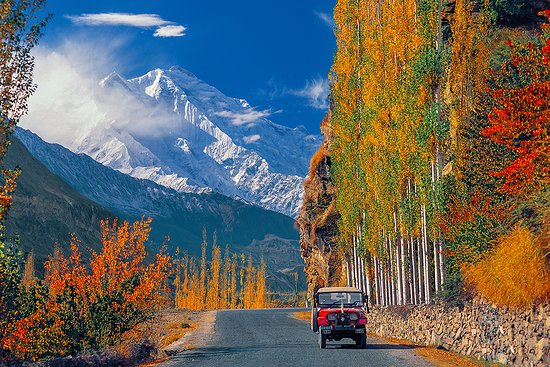
Hello… Welcome back with the hope that you all will be fine and doing great. If some have got some issue even then no worries ups and downs are part of life. We all wish for the betterment of each other and everything will be alright. Anyhow you must be waiting for the next episode of our visual tour. Before going into visualization I want to tell you that always do remember that everything happens for something better. So keep your struggle and hope for the best. As Quaid once said: “Expect the best, Prepare for the worst”.
Now, what do you think to have a visualization of our northern area? I believe whenever you hear northern area the name of Hunza comes to your mind. So let us know something about the forts of Hunza valley.
Altit Fort
Hey ….! This is the Altit Fort located in Karimabad in the Hunza valley in Gilgit Baltistan. This fort was home to the hereditary rulers of the Hunza state. They were known to be the Mir. You know it is one of our antiques as it is about 900 years old. That means it is the oldest monument in Gilgit–Baltistan. Some decades back it was in great disrepair. But Aga Khan Trust for Culture has graciously restored it. And then it has been open to the public since 2007. You can see the antiques preserved from the Mir kingdom. Oh, how lovely are old things.
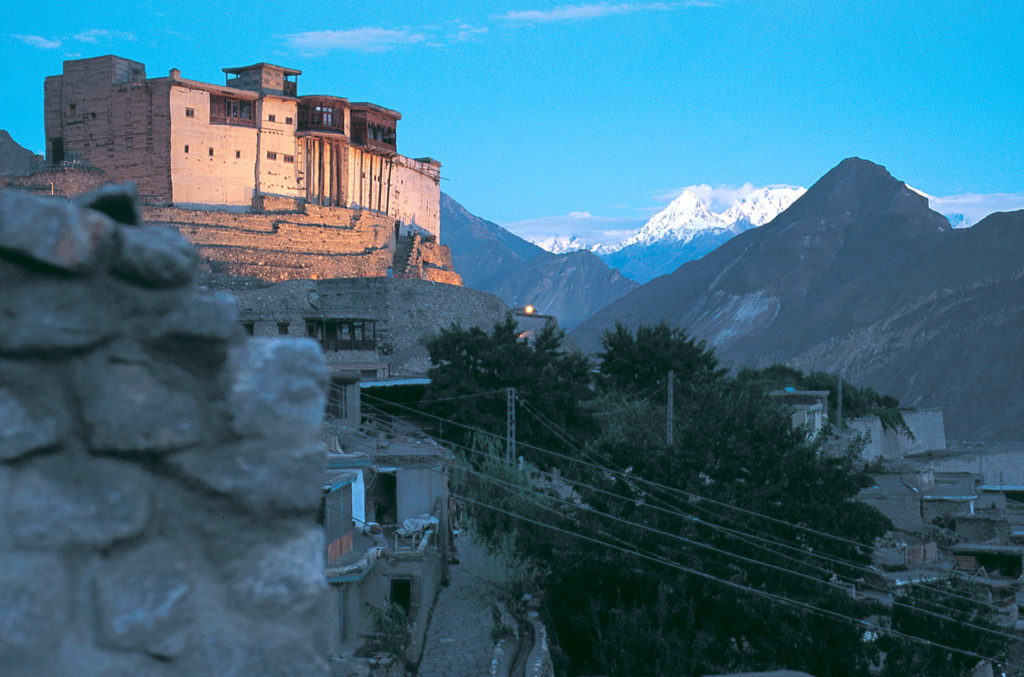
A fort under the clear blue sky, high mountains, and down valley is just an ideal to many but it is present. Nature is shouting from every angle. Now just mend your imaginative steps toward Baltit Fort that is not far from the Altit Fort.
Baltit Fort
So here we have reached our second destination of today’s trip. This fort is also near the Karimabad town Hunza Valley. Let’s know a bit about its history. It was founded in the 8th century CE, it has been on the UNESCO World Heritage Tentative list since 2004. In the past, the survival of the feudal regime of Hunza was ensured by the impressive fort, which overlooks Karimabad. The foundations of the fort date back to 700 years ago, with rebuilds and alterations over the centuries. In the 16th century, the local prince married a princess from Baltistan who brought master Balti craftsmen to renovate the building as part of her dowry. All this information is so interesting, aren’t they?
You all know there is a level of our kings or Mirs so far the Mir of Hunza also abandoned the fort in 1945 and moved to a new palace down the hill. The fort started to decay which caused concern that it might possibly fall into ruin. But fortunately, the Royal Geographical Society of London initiated a restoration program and was supported by the Aga Khan Trust for Culture Historic Cities Support Program. The program was completed in 1996 and the fort is now a museum run by the Baltit Heritage Trust. You can see it has preserved the rich heritage of Mirs of Hunza. How finely everything has been restored. You can see its architecture is far different and unique.

I think we should have to stop it here so that we have some more to visit and to visualize some other day. We will be covering the whole of our country. And for that, we would like to thank digital to bring us together and making this visualized tour. Bye, Bye for today.
Culture
Beauty is in the eye of the Beholder while Pakistan comes into every Eye (Episode 1)
Fariyal Mir
Published
10 months agoon
July 22, 2024
This writing is for all beauty lovers. Especially for those who love nature. The Ultimate Being has blessed this land with all the elements of nature. I invite you all to start your visual tour of Pakistan. And I assure you all its five provinces have mesmerizing scenes. Let’s begin our tour from Sindh province.
Nature Spots in Sindh:
Sindh is the bottom down sea level province of Pakistan. It has amazing spots to be visited. Here we will visualize some of them.
- Gorakh Hill:
So Gorakh Hill comes first which is an elevation of 5700 feet. The amazing hill shower you with its coldness. It gives breathtaking views. The footpath diverging the shrubs and the sandy elevation leads you to unending peace. Moreover, the blue sky seems about to touch you.
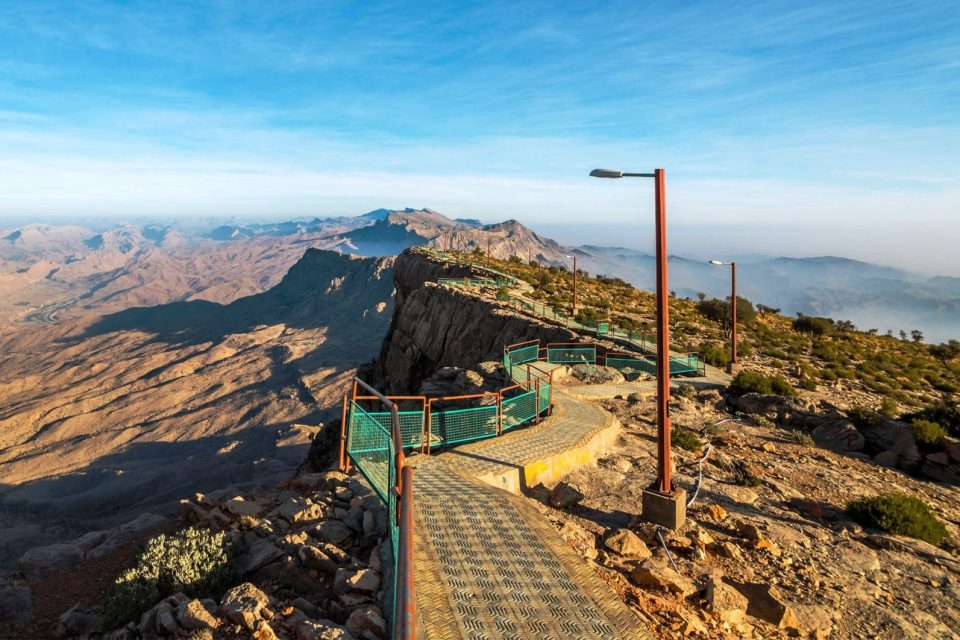
- Kot Diji Fort
Now enter into Kot Diji Fort located in the town of Kot Diji in Khairpur. The symbolic fort has preserved an important cultural heritage of Sindh. As Talpur Dynasty was built from 1785 to 1795. So, the royal structure widens eyes.

- Mohenjo Daro
Hey come out of the social study book and visualize this beautiful civilization. It is located in Harappa, Mohenjo Daro which means “the mound of the dead”. Whereas it takes you away from the present back to that oldest civilization. The inside construction system is just an amazing and idealized one.
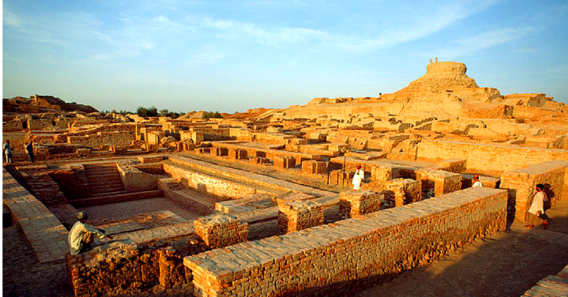
Let’s have some views of Baluchistan province. That is also an amazing outskirt for tourism.
- Pir Ghayb (The Invisible Saint) Waterfalls – Bolan, Balochistan
Aww, these beautiful falls flow emotions with it. The beautiful scenery is associated with the myth. But what is seen is no less than a miracle.
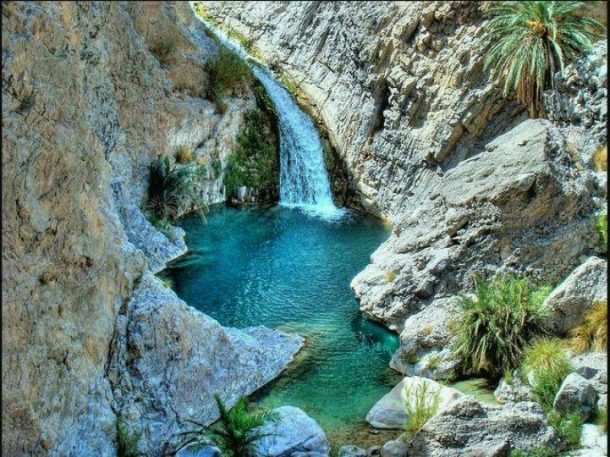
- Quaid-e-Azam Residency, Ziarat
It is so honoring to visualize the residency of the Father of the nation. This wooden cottage is very fine to speak about Quaid. So have a mesmerizing visualization.
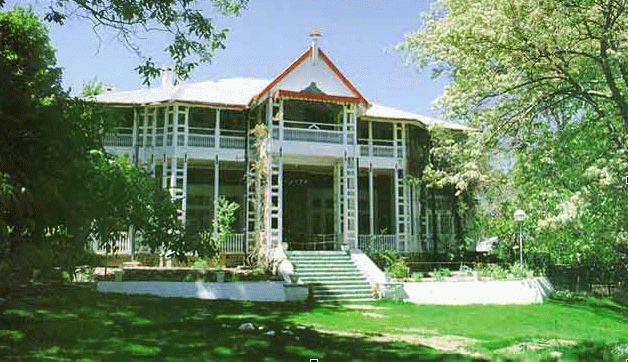
- The Hannah Jheel, Quetta
Continue your journey with me because now we are entering into the frozen and astounding lake, Hannah. It is too perfect and amazing. A complete depiction of nature.
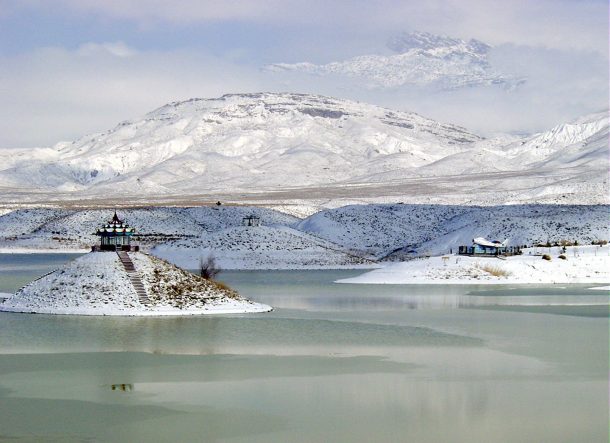
Hey readers what do you say? Should we end our trip here? I think we should stop so that we can have the rest of it on our next reading. I hope you have enjoyed the visualization. It is not just for visualization. You can come and visit all these nature spots. Believe Pakistan is full of natural beauty. Bye….. Bye …. Will meet you all in the upcoming writing.
Culture
Pakistani culture has the worth to attract millions
Published
3 years agoon
November 19, 2021
(APP): Pakistan Community Purchasing Center set up in Chengdu, Sichuan Province would help set up a good foundation for the sale of Pakistani products to Chinese consumers. In the future, more such centers will be set up in different places in China, said Li Hongwu, President of Pakistan Sichuan Chamber of Commerce on Wednesday during his visit to the Pakistan Commodity Purchasing Center.
Our center aims to shorten the lengthy procedure of wholesale distribution and retail to enable buyers to communicate with manufacturers directly, he said adding that this center is similar to a factory store, but its quality requirements are more strict.
Li Hongwu told China Economic Net (CEN) that the center selects representative products from both China and Pakistan, where Chinese customers can physically examine Pakistani products. It can help set up a good foundation for wider sale channels of Pakistani products including handmade products with Pakistani characteristics which are very popular in China.
Many people appreciate handmade brasses and asked about how many days it takes to make one piece, said Pakistani Hamza Malik, a merchant whose business settled in the center. Last month, the center organized a 7-day event, which attracted around 300 visitors. The visitors tasted Pakistani milk tea and Pakistani food, and Pakistani rice was their favorite, he said.
“We also played a video of Pakistan’s scenery, and many people showed interest to visit Pakistan. People’s enthusiasm was beyond our expectations,” Li Hongwu said.
Cultural representation is the actual representation of any nation. It covers up our values, norms, tradition, language, and all others. And it is the time to show our cultural values to the world, not just China. Culture is the aspect that makes us unique and different from the world.

The Chiltan Ibex: A Rare Treasure of Balochistan

MANGO HEALTH BENEFITS NUTRITION








